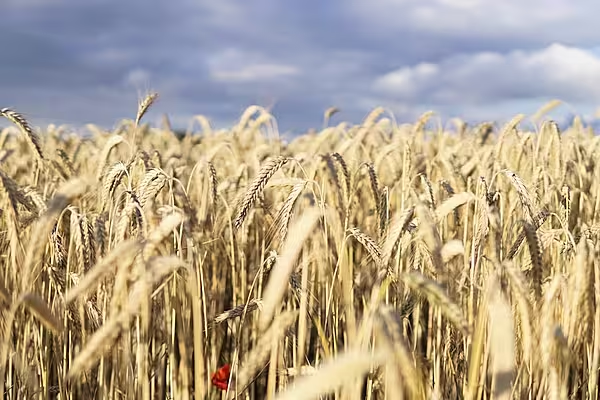With U.S. farmers bracing for a fourth year of declining incomes, grain production is poised for a drop. Just how much the smaller output will help to erode massive inventories is one of the main data points traders will be watching when the U.S. releases its monthly crop report on Wednesday.
Falling Production
For the first time in 29 years, global harvests of corn, soybeans and wheat will fall simultaneously, according to average estimates of as many as 20 analysts surveyed by Bloomberg. The U.S. Department of Agriculture, in its World Agricultural Supply and Demand Estimates (WASDE) report released at noon in Washington, will also update its outlook for stockpiles from this season with analysts looking for total supplies to increase.
Inventories are piling up to record levels this year after farmers around the world produced more to make up for lower prices with larger volume. Better crop science and favorable weather also means that yields reached all-time highs in 2016, USDA data show. While global demand is also climbing, it hasn’t yet been enough to offset the supply buildup. Will that trend start to reverse next season?
Yield Uncertainty
It’s already been a less than perfect start to the new U.S. crop season, and yield uncertainty is offering temporary price support. More details will emerge in June and July on how much production may fall. In the meantime, late spring snow and heavy rains have prompted hedge funds to trim their bearish holdings in some of the agriculture markets amid the supply concerns.
There will be quality losses, and some farmers will abandon wheat fields for harvesting after heavy snow, freezing temperatures and wind hurt crops in the past two weeks, according to Tanner Ehmke, senior economist at CoBank, who recently traveled Kansas wheat fields. Flooding and cold temperatures delayed planting and damaged some corn and soybean crops from Louisiana to Ohio. Hard red winter wheat futures jumped to a seven-week high on May 2 before giving back most of those gains.
“The take-away from the quick run up in wheat prices and subsequent retreat is that even small disruptions in production will not produce significant rallies,” said Richard Feltes, head of market insights for Chicago-based RJ O’Brien & Associates LLC. “The grain and soybean markets are saddled with huge carryover inventory cushions.”
First Look at 2017-18 Crops
This will be the first government outlook that includes production projections for the 2017-2018 season. The U.S. wheat crop is expected to drop 20 percent from the prior year to 1.858 billion bushels, according to a Bloomberg survey. Analysts also expect domestic corn and soybean output will retreat.
Shrinking wheat and corn output means that grain inventories will finally start to ebb. Before the 2018 harvest, U.S. corn reserves are projected to drop 8 percent to 2.129 billion bushels, while wheat stockpiles slide 20 percent, analysts surveyed projected. The declines may offset the forecast for record soybean supplies.
Brazil Harvests
Wednesday’s reports will also provide new estimates on Brazil’s crops. Early planting, improved seed genetics and nearly ideal growing weather have boosted yield estimates the past two months. Traders surveyed by Bloomberg see the USDA raising its estimate for Brazilian soybean production to a record 111.3 million metric tons, up from 111 million forecast in April. Corn production is also projected to be higher than last month’s outlook, the survey showed.
Bigger South American crops means increased competition for U.S. exporters that will limit price rallies, especially at a time of ample stockpiles.
“We had a big buildup in supplies in the last year, so it will take additional production problems to significantly reduce inventories next year,” said Alan Brugler, president of Brugler Marketing and Managements in Omaha, Nebraska. “You need a substantial drop in U.S. production to get a sustained recovery in prices.”
News by Bloomberg, edited by ESM. Click subscribe to sign up to ESM: The European Supermarket Magazine.














